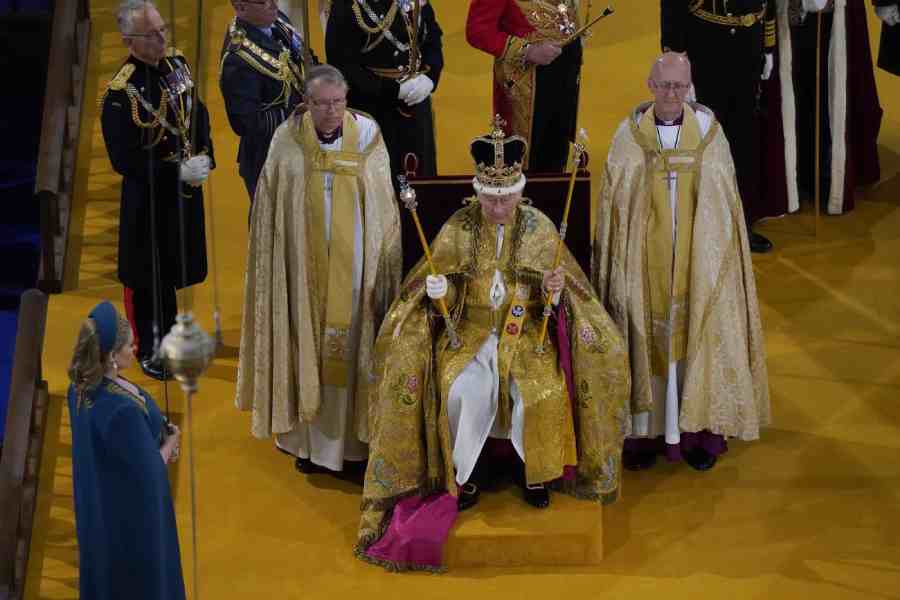Crowns and heads have a strange and complex relationship. When King Charles I was beheaded by the British Parliament in 1649, his crown was also destroyed. Cromwell had told one of the judges at the trial of Charles I, sometime in December 1648: “I tell you, we will cut off his head with the crown upon it.” The jewels in it were sold and the gold is said to have been melted down in the mint. The crown that Charles III wore at his coronation yesterday is a replica of that long destroyed crown and made with fragments of it.
A head without a crown
The last Mughal emperor of India Bahadur Shah Zafar, got to keep his head — he was deposed and exiled to Burma — but was separated from his crown. The crown was auctioned, wherein it was purchased by a Major Robert Tytler. Tytler first wanted to sell it to Bond Street jeweller for £1,000 and then changed his mind and offered it to Queen Victoria instead. Sir Charles Wood, who was secretary of state for India, wrote in a letter to Prince Albert that the crown was not a crown but a “very rich skull-cap”. It was made of gold, turquoises, rubies, diamonds, pearls, emeralds, feathers and velvet. Sir Charles offered £500 for it on behalf of the Queen. The colonel sold it in the hope that it would yield a greater reward in the form of some sort of grand appointment, whenever he returned to India. That was 1861.
A crown missing a head
Then there was the Awadh coronation of 1819. The rulers of Awadh had always been deferential to Delhi. And then came along Ghazi al-Din Haydar who proclaimed himself padshah or emperor. He had himself publicly crowned. Historians note that the crown was “of European type” and resembled “the crown of Charlemagne on a pack of cards”. The last king of Awadh, Wajid Ali Shah, had a wonderful ornate crown, most likely the one worn by Ghazi al-ud-Din Haidar Shah. Wajid Ali was exiled to Metiabruz near Calcutta in 1856. This crown was presented by the taluqdars of Awadh to King Edward VII, when he was touring India in 1875-76. In the film Shatranj ke Khiladi, directed by Satyajit Ray, the narrator tells the audience that Wajid Ali Shah may not have been fond of ruling but he was most fond of his crown. In 1851, he had sent it to London to be displayed at an exhibition. Governor General of India Lord Dalhousie had commented: “The wretch at Lucknow, who had sent his crown to the exhibition, would have done his people and us a great service if he had sent his head in it, and he would never have missed it. That is the cherry that will drop into our mouths one day.”










